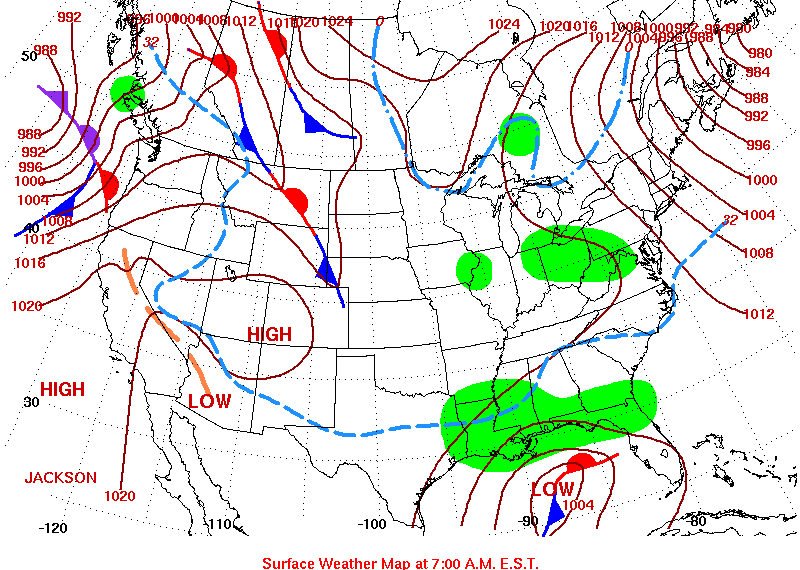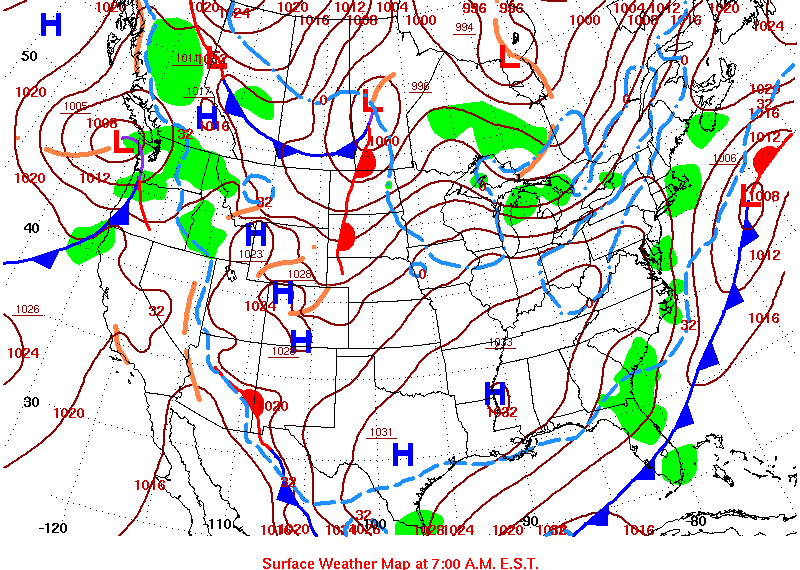
GaWx
Members-
Posts
17,594 -
Joined
Content Type
Profiles
Blogs
Forums
American Weather
Media Demo
Store
Gallery
Everything posted by GaWx
-
Yeah, these TT snow maps are way overdone on the SE side due to counting all wintry as snow. But you can see the snowier/NW trend. The qpf also shows the significant wetter/NW trend! So, at 12Z, NAM, Icon, and GFS further NW. This is similar to the last day or two strong NW trend for late Jan 2014! 6Z GFS 12Z GFS
-
The 12Z Icon also got a bit wetter and is similar to the 12Z NAM. It wasn’t nearly as dramatic a change as the NAM’s but the 6Z Icon had already been much further NW and wetter than 6Z NAM. 6Z Icon 12Z Icon Look at how much further NW and wetter the 12Z Icon is vs the 18Z Icon on Saturday:
-
Warning: This is probably a great example of getting “NAM’ed”. What the heck? 6Z (3 km) had this qpf: 12Z: How could it increase so much in just one run? Not far from me it increased from 0.08” to 1.12”! The NW end of the precip went from a line from FL/AL/GA intersection to Albany to just N of SAV to CHS to 40 miles offshore from the SC/NC border on the 6Z to way up to a just N of Columbus/Macon to Augusta to just N of CAE to Fayetteville line on the 12Z! That’s a 100-125 mile NW shift! Any opinions?
-
The Euro suite, which had been one of the wettest and is why I said I was fading it, continues its gradual drying trend while the Icon, which had been one of the driest, has been trending wetter. So, now the Icon and Euro are pretty close. The extremely low dewpoints are going to mean lots of virga to start. Will the virga overperform and minimize how much reaches the ground? Quite possible and it may be the main reason for big differences in qpf and changes from run to run.
-
What happened to the 0Z UKMET? Were the weenies too much for it?
-
0Z ICON continues the general trend of this model moistening up in NW FL as well as in the GA/SC coastal areas: 0Z Icon qpf 0Z Icon 10:1 snow Icon snow from 24 hours ago:
-
18Z Euro: still going for at least a once in a generation storm in much of deep SE/Gulf coast! Looks to be a pretty quick mover. I’m fading these amounts as of now in deference to some of the drier other models. Kuchera snow: Sleet: ZR: qpf:
-
18Z Icon: 10:1 (Kuchera not available) so these amounts need to be reduced some especially SE side; regardless, overall trend for these areas has been a notable increase and further north for N end vs what yesterday and especially Fri runs showed: the Wed/Thu runs were actually pretty snowy before Fri became much drier; now bouncing back a good bit! qpf: overall wetter trend recently due to slightly stronger low Compare to qpf as of run 24 hours ago:
-
Tony, This is a good source as it has snow option by county and date: https://www.cocorahs.org/maps/ViewMap.aspx?state=usa
-
CHS just issued WSWatch also: sounds reasonable to me; I’d be quite happy if we could get 1-2” of snow/sleet here considering some models have under 1”, the trend has been toward weaker low/drier, and ~1” has occurred only twice since 2/1989 (1/2018 and 2/2010). Have to keep in perspective based on long period of climo history available. Avg annual snow/sleet here is 0.2”. This isn’t ATL, which averages 10 x as much! 1” would be 5 years worth climowise. URGENT - WINTER WEATHER MESSAGE NATIONAL WEATHER SERVICE CHARLESTON SC 254 PM EST SUN JAN 19 2025 ...WINTER STORM WATCH IN EFFECT FROM TUESDAY AFTERNOON THROUGH WEDNESDAY MORNING... * WHAT...HEAVY SNOW POSSIBLE. TOTAL SNOW ACCUMULATIONS ONE TO THREE INCHES POSSIBLE. * WHERE...IN GEORGIA, BULLOCH, CANDLER, EFFINGHAM, EVANS, JENKINS, SCREVEN, AND TATTNALL COUNTIES. IN SOUTH CAROLINA, ALLENDALE, CHARLESTON, COASTAL COLLETON, DORCHESTER, HAMPTON, INLAND BERKELEY, INLAND COLLETON, INLAND JASPER, AND TIDAL BERKELEY COUNTIES. ——————————— Savannah is covered by this 2nd part: ..WINTER STORM WATCH IN EFFECT FROM TUESDAY AFTERNOON THROUGH WEDNESDAY MORNING... * WHAT...HEAVY MIXED PRECIPITATION POSSIBLE. TOTAL SNOW AND SLEET ACCUMULATIONS OF ONE TO TWO INCHES AND UP TO A QUARTER INCH OF ICE ACCUMULATION POSSIBLE. * WHERE...IN GEORGIA, COASTAL BRYAN, COASTAL CHATHAM, COASTAL LIBERTY, COASTAL MCINTOSH, INLAND BRYAN, INLAND CHATHAM, INLAND LIBERTY, INLAND MCINTOSH, AND LONG COUNTIES. IN SOUTH CAROLINA, BEAUFORT AND COASTAL JASPER COUNTIES. * WHEN...FROM TUESDAY AFTERNOON THROUGH WEDNESDAY MORNING. * IMPACTS...PLAN ON TREACHEROUS ROAD CONDITIONS, ESPECIALLY ON BRIDGES AND OVERPASSES. VERY COLD TEMPERATURES WEDNESDAY NIGHT COULD RESULT IN REFREEZING AND BLACK ICE FORMATION. POWER OUTAGES AND TREE DAMAGE ARE LIKELY DUE TO THE ICE.
-
Here are 9 winter storms that gave GA notable wintry precip from ATL all the way to the coast: -1/28/2014: 2.6” snow ATL and light ZR/IP coast; 1003 mb low tracked across C FL but there was additional upper level energy that wasn’t on models til within 1-2 days that extended the precip’s northern edge much further north than earlier expected; earlier models had much more ZR/IP on coast than actually occurred; high to N/NW was 1036 mb over MO; this map is from 7AM next day: -2/12/2010: 3-4” snows ATL and CHS with 0.9” snow at SAV airport tail end changeover; low tracked well down in Gulf at a strong 997 mb and then across C FL; high to NW was very weak (only 1010s); well predicted by models: -1/7/1988: 4.2” sleet ATL and moderate ZR SAV; weak low (1017 mb) went from just S of Panhandle across N FL below strong wedge induced by 1037 mb NE high; see figure 5 at this link: https://www.weather.gov/media/gsp/localdat/TechAttachments/ta2001-02.pdf -2/17-8/1979: 4.2” sleet ATL and light wintry mix SAV but CHS had 2”; weak low (1018 mb) was deep in the Gulf below very strong wedge induced by 1050 mb NE high and then crossed C FL; see surface maps here: https://ocean.weather.gov/2-PresidentsDayStormColloquium_Uccellini.pdf -2/10-11/1934: 4” snow ATL, 0.5” sleet SAV; very weak 1020ish low well down in Gulf below very strong wedge induced by 1047 mb NE high; see 2/10/1934 map here: https://library.oarcloud.noaa.gov/swm.docs.lib/1934/19340210.pdf -2/25/1914: Snow: ATL 2-3” and AHN/MCN: 6-7”; SAV had 0.5” sleet and major ZR; very weak 1020ish low formed well down in E Gulf below strong wedge induced by 1039 mb mid-Atlantic high; low crossed south-central FL; see 2/25/1914 map here: https://library.oarcloud.noaa.gov/swm.docs.lib/1914/19140225.pdf -2/11-12/1899: Snow 6.5” ATL and 2” SAV; 1009 mb low well down in Gulf and 1052 mb high to NW; low crossed C FL; see 2/12/1899 map here: https://library.oarcloud.noaa.gov/swm.docs.lib/1899/18990212.pdf -2/15-6/1895: Snow 6” ATL and 1.8” SAV; 1017 mb low well down in Gulf and 1047 mb high well to NW; low crossed C FL; see 2/15/1895 map in here: https://www.stmweather.com/blog/valentines-day-1895-snow-in-new-orleans -1/18-19/1893: Snow 9.6” ATL and 1” SAV; 1008 Gulf low then tracked ENE to Pensacola to SAV, furthest N of all of these storms while the high over the mid-Atlantic states moving into NE
-
The model consensus has coldest 850s moving into the upper Midwest/N Plains on Mon at an astoundingly cold -36 to -38C! Those who closely follow 850s know that that intensity of cold is not seen often!
-
“If you’re looking for the extremes of meteorology, this is really the bee’s knees” ”If you’re a weather geek, it’s one heck of a week!” -Joe Bastardi 1/18/25
-
Looking at the last 5 Euro runs, one can see the Gulf to SW Atlantic low has been trending weaker while the center of the Arctic high has been trending eastward. Despite the amounts having come down some, the 0Z is still as modeled a big/historic hit for near and on the coast and the 0Z EPS is supportive see below). But if the low keeps trending weaker, this could easily end up minor even there. After all, getting an historic hit has to be exceedingly difficult by its definition. I thought KCHS forecasting 2-4” (extremely rare) three days in advance was quite bold and risky. The Euro is the only major 0Z global op that is giving the area that much per Kuchera. Uk, GFS, and Icon have only light precip at best. 0Z CMC is only other one close as it’s got 1-3” Kuchera, but it has overall been trending drier. 0Z EPS 10:1 (I’d reduce it 1/3 on SE side):
-
0Z Euro: Kuchera
-
Today’s Euro Weekly run in the SE for Jan 20-26 is the coldest yet and would easily mean by far the coldest week of the winter to date with 15-18F BN in most of VA/NC/SC/GA/AL/NW FL! That equates to a mean of 25-33F! That means that the bulk of the active posters are forecasted to be in/near the Jan normals for Chicago for N areas like RDU/GSO and St. Louis for more S areas like CHS:
-
From NWS CHS: surrealistic! MONDAY NIGHT INTO TUESDAY, THE HIGHLY AMPLIFIED UPPER TROUGH TRENDS TOWARD A POSITIVE TILT WHILE SEVERAL SOUTHERN STREAM SHORTWAVES DEVELOP. LATE MONDAY NIGHT, A WEAK COASTAL TROUGH IS FORECAST TO DEVELOP JUST OFF THE GA COAST. ALTHOUGH THE BRUNT OF THE MOISTURE AND FORCING ARE EXPECTED TO REMAIN OFFSHORE, WEAK MOIST ISENTROPIC ASCENT COULD PRODUCE SOME LIGHT PRECIP ALONG THE GA COAST LATE MONDAY NIGHT. OUR HOURLY TEMPERATURE VALUES DURING THIS TIME WOULD BE RIGHT AROUND FREEZING, SO IF ANY PRECIPITATION DOES DEVELOP, IT COULD FALL AS LIGHT FREEZING RAIN. DURING THE DAY TUESDAY, A STRONG DIGGING SHORTWAVE WILL TRAVERSE THE SOUTH CENTRAL UNITED STATES. EXTENSIVE CLOUD COVER AND COLD AIR ADVECTION WILL YIELD A CHILLY DAY WITH HIGHS ONLY IN THE MID/UPPER 30S IN SOUTHERN SC AND LOW/MID 40S IN SOUTHEAST GA. MOISTURE WILL SLOWLY OVERSPREAD THE AREA FROM THE SOUTHWEST LATE TUESDAY, AND EVENTUALLY SOME FORCING FOR ASCENT WILL TRANSPIRE. HOWEVER, MOST GUIDANCE HAS TRENDED A BIT DRIER ON TUESDAY WITH LITTLE TO NO PRECIPITATION THROUGH SUNSET. WE HAVE NOT FULLY JUMPED ON THIS POSSIBILITY GIVEN THAT MODELS ARE NOTORIOUS FOR STARTING PRECIPITATION TOO LATE IN THESE SCENARIOS, SO WE MAINTAINED CHANCE POP TUESDAY AFTERNOON. AS FAR AS PRECIPITATION TYPE, MODEL SOUNDINGS SUPPORT SNOW ACROSS THE INLAND HALF OF OUR AREA, THEN THINGS GET TRICKY AS ONE MOVES CLOSER TO THE COAST. A DECENT WARM LAYER IN THE LOWEST COUPLE THOUSAND FEET, COMBINED WITH FAIRLY DRY AIR WITHIN THE DENDRITIC GROWTH ZONE, INDICATES THE POTENTIAL FOR RAIN OR SNOW IN THE REST OF THE FORECAST AREA. ALONG THE GA COAST THE ATMOSPHERE LOOKS TOO WARM TO SUPPORT ANYTHING OTHER THAN RAIN. THIS IS ALL CONTINGENT ON ANY PRECIPITATION EVEN OCCURRING, WHICH STILL LOOKS IFFY FOR TUESDAY AFTERNOON. AT THIS POINT, GIVEN THE LOW CONFIDENCE IN ANY QPF, WE DO NOT SHOW ANY SNOW OR ICE ACCUMULATIONS FOR TUESDAY AFTERNOON. LONG TERM /TUESDAY NIGHT THROUGH SATURDAY/ THE FORECAST IS QUITE INTERESTING IN THE LONG TERM PERIOD, ALBEIT EXTREMELY CHALLENGING. THE PRIMARY UPPER SHORTWAVE WILL PASS THROUGH THE SOUTHEAST TUESDAY NIGHT AND WEDNESDAY. MEANWHILE THE ARCTIC HIGH PRESSURE WILL REMAIN ANCHORED OVER THE CENTRAL APPALACHIANS, MAINTAINING A COLD NORTHERLY FLOW IN LOW/MID LEVELS. DEEP SYNOPTIC FORCING ASSOCIATED WITH THE SHORTWAVE WILL SPUR WIDESPREAD PRECIPITATION TUESDAY NIGHT INTO WEDNESDAY MORNING. MODELS ARE ACTUALLY IN REASONABLY GOOD AGREEMENT ON THE TOTAL LIQUID PRECIPITATION RANGING FROM 0.25-0.50" FAR INLAND AND 0.5-0.75" ELSEWHERE. HOWEVER, DETERMINING THE SNOWAMT AND ICEACCUM IS MUCH MORE CHALLENGING BECAUSE IT DEPENDS ON P-TYPES. MODEL SOUNDINGS INDICATE A LACK OF ICE NUCLEI ACTIVATION AT THE ONSET OF THE MAIN FORCING TUESDAY EVENING. HOWEVER, THERE SHOULD BE AMPLE COLD, DRY AIR IN THE LOW-LEVELS SUCH THAT TEMPS WILL QUICKLY COOL TO FREEZING AT THE SURFACE. THIS COULD YIELD FREEZING RAIN FOR MANY AREAS FOR A FEW HOURS AT THE BEGINNING OF THE EVENT. THEN, GUIDANCE SHOWS THE ENTIRE PROFILE QUICKLY MOISTENING AND BECOMING MORE OF A SNOW PROFILE FROM LATE TUESDAY MORNING [SIC] THROUGH WEDNESDAY MORNING. EVEN AFTER THIS OCCURS, THERE IS STILL PARTICULARLY HIGH UNCERTAINTY ABOUT HOW THINGS WILL PLAY OUT ACROSS COASTAL GA. AS FAR AS ACCUMULATIONS, IT IS OF COURSE ON EVERYONE'S MIND. BEING THAT IT'S MORE THAN 3 DAYS OUT AT THIS POINT, IT'S STILL A LITTLE EARLY TO CONFIDENTLY FORECAST ACCUMULATIONS. AT THIS JUNCTURE WE'RE BALLPARKING ONE OR TWO TENTHS OF AN INCH OF FREEZING RAIN ACCRETION AND 2-4" OF SNOW. IT STILL APPEARS THE GREATEST ICE ACCRETIONS WOULD PROBABLY BE IN COASTAL SOUTHEAST GA WHERE THE PRECIPITATION STAYS AS FREEZING RAIN LONGER THAN ELSEWHERE. ONE THING THAT IS A NEAR CERTAINTY IS THAT THESE ACCUMULATION FORECASTS WILL CHANGE BETWEEN NOW AND TUESDAY NIGHT. THE INITIAL PRECIPITATION SHOULD TAPER OFF WEDNESDAY MORNING. TEMPS WEDNESDAY AND WEDNESDAY NIGHT WILL BE QUITE COLD, ESPECIALLY IF WE HAVE SNOWPACK. WE COULD SEE SOME SUNSHINE BY LATE WEDNESDAY AFTERNOON, BUT PROBABLY NOT ENOUGH TO FULLY MELT ANY ACCUMULATED PRECIPITATION. HIGHS MIGHT RISE A FEW DEGREES ABOVE FREEZING. WEDNESDAY NIGHT LOWS WILL BE IN THE MIDDLE TEENS. WITH A FEW KNOTS OF WIND ON TOP OF THAT, WIND CHILLS MAY DIP BELOW 10F LATE AT NIGHT, POTENTIALLY REQUIRING AN EXTREME COLD WARNING. THE FORECAST FOR WEDNESDAY NIGHT THROUGH SATURDAY IS NOW A LOT TRICKIER THAN WE PREVIOUSLY THOUGHT. MODELS ARE STARTING TO SHOW ADDITIONAL SHORTWAVES MOVING THROUGH THE SOUTHEAST DURING THIS TIME, WITH A POSSIBLE COASTAL TROUGH DEVELOPING THURSDAY OR THURSDAY NIGHT. QUITE A FEW MODELS ARE NOW SHOWING A FEW TENTHS OF AN INCH OF QPF THURSDAY THROUGH FRIDAY. WITH ARCTIC HIGH PRESSURE STILL IN PLACE, SOUNDINGS SHOW THAT SOME OF THIS COULD FALL AS FREEZING RAIN. WE ADDED ZR TO THE FORECAST DURING THIS TIME FRAME, THOUGH THERE REMAINS A LOT OF UNCERTAINTY ABOUT WHEN THIS WOULD OCCUR. IF WE DO GET A PROLONGED PERIOD OF FREEZING RAIN ON TOP OF ACCUMULATING SNOWFALL, THIS WOULD RESULT IN SIGNIFICANT IMPACTS THROUGH MUCH OF THE WEEK.
-
I looked up Cordele, which looks like it is ~20 miles to the west of Rochelle, because they have good snow records back 90 years. Here are the only measurable snows there: 2/1973: 3.5” 2/2010: 1.5” 1/1935: 0.8” 12/1943: 0.5” 1/2018: 0.3” So, EPS is saying 90%+ chance for at least 3rd highest snow on record! And there’s ~40% chance to break the record if you can believe that!
-
Regardless of what this storm does or doesn’t do, the EPS is about as perfect as can be for us for 3.5 days out. Hope we get 1”+! This suggests 70-90% chance for our corridor!! Also, note 90%+ for ILM, MB, Charleston, Albany, Dothan, Pensacola, Mobile, Biloxi, and N.O.!!
-
12Z EPS members snow (excludes sleet/ZR): it is 10:1 rather than Kuchera. So, I’d take ~1/4 off for deep SE but still this is about the best ever for deep SE/Gulf coast. May not be next opportunity like this for many years to come! It may be finally our time to shine. Not a flake or pellet in 7 years. And maybe history about to be made?! We’ll see as this is still ~3.5 days out so not getting hopes up too high. Also, there’s the very real danger of a bad icestorm even into N FL! @metallica470 @Awesomesauce81 @gtg947h
-
12Z EPS 10:1 looks amazingly good for many and even historic for deep SE! Ens maps like this in deep SE/Gulf coast almost unheard of: Qpf:
-
And most of GA/SC among others
-
12Z Euro similar to 6Z: Sleet ZR
-
What about Feb 12 or 13 of 1899?
-
12Z GEFS vs 6Z/0Z: further SE/weaker GOM low, drier






